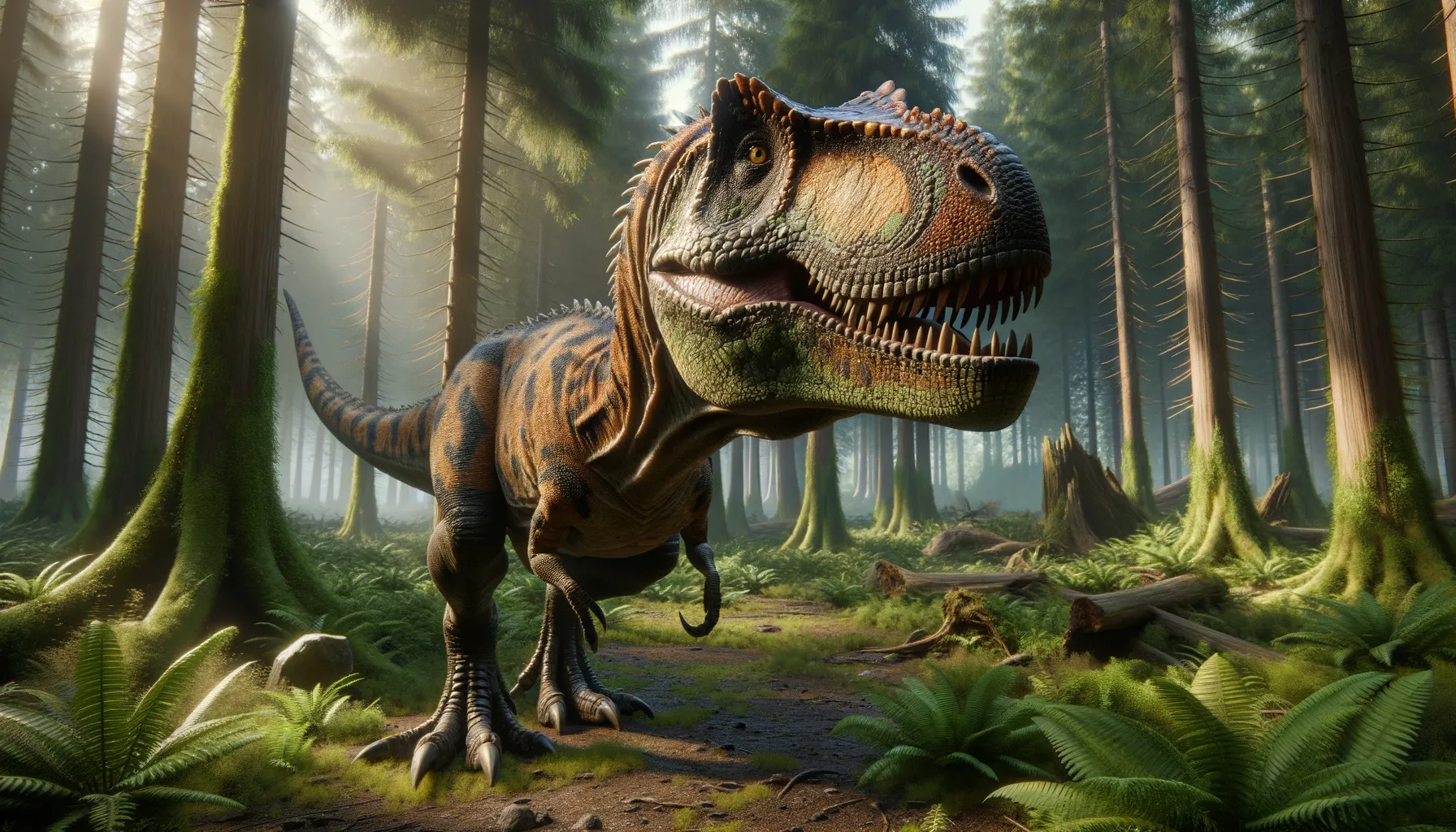
Ojoraptorsaurus
The swift and cunning raptor of the past.
Period
Cretaceous
Length
Roughly 6 meters in length.
Height
About 2.5 meters tall.
Weight
Around 300 kilograms.
Ojoraptorsaurus was a carnivorous dinosaur that roamed the lands during the Cretaceous period. Known for its impressive size and agility, it thrived in North America. This theropod had a robust build which is similar to other raptors of its time. With sharp claws and teeth, it was a formidable predator capable of taking down large prey. Its fossils have provided significant insights into the behavior of dinosaurs living in dense forest ecosystems.
Diet
Ojoraptorsaurus was a carnivore that primarily fed on smaller dinosaurs and potentially scavenged. Its diet likely included reptiles and mammals of varying sizes, depending on availability in its environment.
Hunting
With its agility and speed, the Ojoraptorsaurus was an effective solo hunter. It used stealth to approach its prey, relying on its sharp teeth and claws to capture and subdue them.
Environmental challenges
Ojoraptorsaurus faced environmental shifts that altered its habitat, such as changing vegetation and climate conditions. These changes would impact its food sources and force it to adapt to new hunting strategies. It also likely competed with other predators for food, necessitating defensive and competitive behaviors.
Speed
Estimated to be moderately fast.
Lifespan
Approximately 20 to 30 years.
First discovery
Discovered in 2000 in Utah, USA.
Fun Facts
- Ojoraptorsaurus was a small, bird-like dinosaur that lived during the Late Cretaceous period.
- It was discovered in the Ojo Alamo Formation in New Mexico, USA, which is how it got its name.
- Ojoraptorsaurus was an oviraptorosaur, a group of toothless theropod dinosaurs known for their beak-like jaws.
- Unlike the larger, carnivorous theropods, Ojoraptorsaurus probably had a more varied diet that might have included plants and small animals.
- Its fossil remains are rare, making each discovery crucial for understanding its lifestyle and ecology.
- Ojoraptorsaurus belonged to the same family as the famous Oviraptor, but it lived millions of years later.
Growth and Development
This dinosaur had a relatively quick growth rate in its juvenile years, reaching maturity in a few years. It likely experienced a consistent growth spurt as it honed its hunting skills. Social interactions and environmental factors played a role in its development during its early life stages.
Habitat
Ojoraptorsaurus lived primarily in forests and plains, rich with diverse flora and fauna. This environment provided ample cover for stealth and abundant prey for survival. The varied topology allowed it to develop unique hunting tactics and adapt to different threats.
Interaction with other species
Ojoraptorsaurus likely interacted with other carnivorous dinosaurs, facing competition for similar food resources. It might have exhibited territorial behavior against other species to secure hunting grounds. Additionally, its presence would influence the behavior of smaller dinosaurs and prey species, which had to adapt to its predation.
Natural lifespan
Its lifespan was naturally limited by environmental conditions and predation.
Reproduction
It reproduced by laying eggs, which were possibly laid in nests and guarded by the parents. Parental care might have been present to ensure the survival of the offspring until they were capable of protecting themselves.
Social behaviour
Ojoraptorsaurus may have been solitary for most of its life, with brief social interactions during mating seasons. Any grouping behavior was likely for protective or mating purposes, rather than hunting.
Fossil locations
Fossils of Ojoraptorsaurus have primarily been found in North American regions, particularly in Utah, USA. These discoveries offer valuable information on the dinosaur's distribution and environmental preferences. Fossil evidence has helped paleontologists understand more about their ecosystem and inter-species dynamics.
